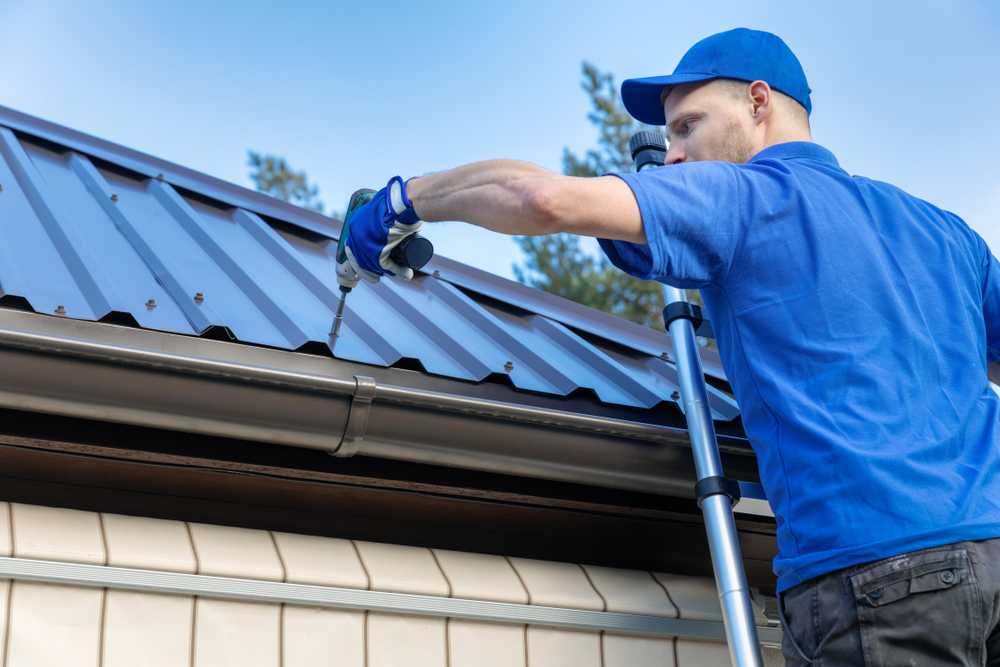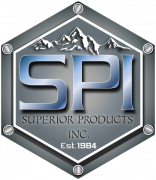
How to Choose the Right Metal Roofing for Your Project: A Contractor’s Guide
March 30, 2025 3:25 pm Leave your thoughtsWhen it comes to selecting the ideal roofing material for a building project, the choice of metal roofing has become increasingly popular due to its durability, aesthetic appeal, and sustainability. As a contractor, understanding the various metal roofing options available, including standing seam and corrugated metal roofing, is crucial to ensure you’re providing your clients with the best possible solutions. This comprehensive guide will walk you through the key considerations for choosing the right metal roofing, whether you’re working on a commercial, residential, or industrial project. We’ll also explore the advantages of custom metal roofing panels in Anchorage, AK, to give you a better understanding of how regional factors influence material selection.
Understanding the Basics of Metal Roofing
Before diving into specific types of metal roofing, it’s important to understand the fundamental benefits that metal roofs provide. Metal roofing is known for its longevity, often lasting 40 to 70 years or more, making it a cost-effective option in the long term. It is also highly resistant to extreme weather conditions, such as heavy snow, rain, and high winds, making it ideal for regions that experience a variety of weather patterns. Additionally, metal roofing is energy-efficient, reflecting solar heat away from the building, which can reduce cooling costs during the summer months.
When choosing metal roofing for your project, you need to consider factors like material options, durability, aesthetic appeal, and budget. There are several different types of metals used in roofing, including steel, aluminum, copper, and zinc. The choice of material will depend on the specific requirements of the project, such as the climate, the desired look, and the building’s overall structure. It’s also important to weigh the long-term maintenance needs and the impact of corrosion, particularly in coastal areas or regions with high humidity.
Standing Seam vs. Corrugated Metal Roofing
Two of the most popular types of metal roofing systems are standing seam and corrugated metal roofing. While both offer unique advantages, understanding the differences between these two systems will help you choose the best option for your project. Standing seam roofing features vertical panels with raised seams, offering a sleek and modern appearance. The seams are mechanically interlocked, providing superior protection against water infiltration. This system is ideal for buildings that require a high level of waterproofing, as it minimizes the risk of leaks and is well-suited to areas with heavy rainfall.
On the other hand, corrugated metal roofing consists of repeating, wavy patterns that are typically installed using exposed fasteners. While corrugated metal roofing is often more affordable and easier to install than standing seam roofing, it may not offer the same level of weatherproofing and aesthetics. However, for agricultural or industrial buildings, corrugated metal roofing is still a great option, as it is highly durable and can withstand harsh environmental conditions. Additionally, corrugated metal roofing tends to be more energy-efficient due to its ability to reflect sunlight, helping to reduce the need for air conditioning in warmer climates.
Ultimately, the decision between standing seam and corrugated metal roofing will depend on your client’s preferences and the building’s intended purpose. Standing seam roofing offers a more streamlined, modern look and superior water resistance, making it ideal for residential and commercial projects, while corrugated metal roofing remains a cost-effective and durable choice for agricultural and industrial applications.
The Importance of Custom Metal Roofing Panels in Anchorage, AK
When working on roofing projects in Anchorage, AK, custom metal roofing panels offer several key advantages that can make a significant difference in the final outcome. The harsh Alaskan climate, which includes heavy snow, strong winds, and long winters, requires roofing materials that are not only durable but also designed to withstand extreme conditions. Custom metal roofing panels allow you to tailor the roofing system to meet the specific needs of the project, ensuring better performance and longevity.
In Anchorage, the ability to customize metal roofing panels is particularly important due to the region’s unique environmental challenges. Snow accumulation on roofs can lead to significant weight loads, so it’s essential to choose metal roofing systems that are designed to handle these pressures. Custom panels can be manufactured to include features such as snow guards, which help prevent snow from sliding off the roof in large amounts and causing damage to the structure below.
Furthermore, custom metal roofing panels can be tailored to match the aesthetic preferences of the project, whether you’re working on a commercial building, a residential home, or a large industrial facility. By choosing custom panels, you can ensure that the roofing system not only performs well but also enhances the overall appearance of the building. Additionally, custom panels can help streamline the installation process, reducing the amount of waste and time spent on-site.
Key Factors to Consider When Selecting Metal Roofing
Choosing the right metal roofing for your project involves considering a variety of factors to ensure that the material meets the specific needs of the building. One of the first things to consider is the climate. In areas with heavy snow or rainfall, it’s essential to choose a roofing system that offers superior water resistance. Standing seam roofs, for example, are often preferred in such climates due to their interlocking panels, which prevent water from seeping through. On the other hand, corrugated metal roofing may be a better option for regions with less precipitation, as it is still highly durable and effective at shedding water.
Another important factor is the roof’s slope. Some metal roofing systems, such as standing seam, are better suited for steeply pitched roofs, while others, like corrugated metal, work well on lower-slope roofs. It’s important to assess the angle of the roof to determine which system will provide the best performance. Additionally, the building’s overall design plays a significant role in material selection. For example, if you’re working on a modern commercial building, you might opt for standing seam metal roofing to achieve a sleek, contemporary look. For a more traditional or rustic design, corrugated metal roofing may be a better fit.
Additionally, the metal’s gauge, or thickness, is a critical factor. Heavier gauges provide better durability and resistance to impact, making them ideal for areas that experience extreme weather conditions. Lighter gauges may be more affordable but might not offer the same level of protection. Therefore, balancing cost with performance is essential when selecting the right gauge for the project.
Installation and Maintenance Considerations
Proper installation is crucial for the long-term performance of metal roofing systems. While metal roofing is known for its durability, it requires precise installation to ensure that it functions properly and provides adequate protection against the elements. It’s important to hire experienced contractors who are familiar with the specific requirements of metal roofing installation. For instance, standing seam roofing systems require specialized tools and techniques for securing the seams, while corrugated metal roofing may require a different approach, particularly when it comes to fastening the panels.
In addition to installation, ongoing maintenance is important to keep metal roofing systems in top condition. Regular inspections are necessary to check for any signs of damage or wear, particularly after extreme weather events. For example, standing seam roofs should be inspected for loose seams or fasteners, while corrugated metal roofs should be checked for rust or corrosion. In areas like Anchorage, where snow and ice accumulation can cause additional wear and tear, it’s essential to monitor the roof for any signs of stress and ensure that snow and debris are cleared away promptly.
Conclusion
Choosing the right metal roofing for your project requires careful consideration of several factors, from material types to regional influences like the harsh climate in Anchorage, AK. Whether you opt for standing seam or corrugated metal roofing, ensuring that the system is properly installed and maintained will help deliver a durable, long-lasting solution that meets your clients’ needs. With the right metal roofing, you can enhance the performance, aesthetic appeal, and longevity of any building project.
Got questions about metal roofing? Let us help! Call us today to learn more!
Categorised in: Metal Roofing
This post was written by admin

